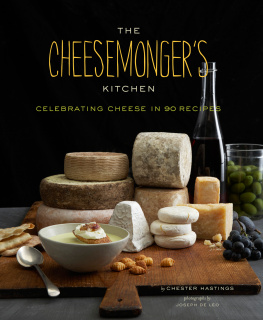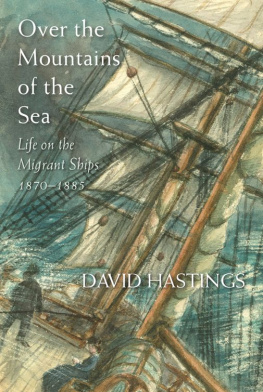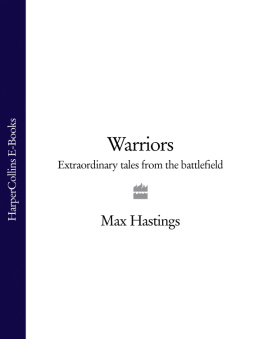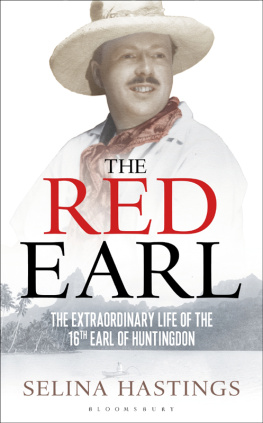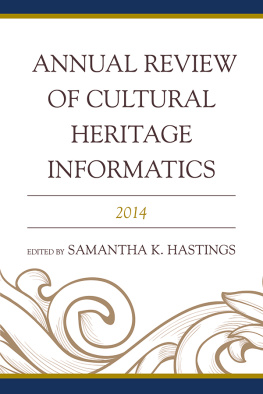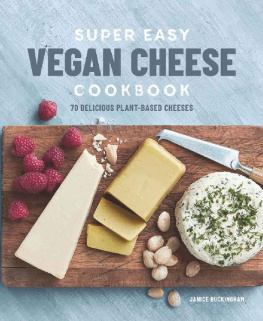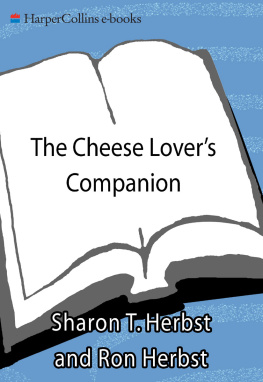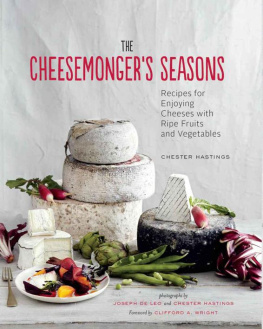
for Susie

ACKNOWLEDGMENTS
First and foremost, this book would simply not have been possible to write without the overwhelming love and support of my beautiful wife, Susie. In the perfect storm of so many blessings all at once, she has stood by me and supported my efforts to do something a high-school dropout has little business doingwriting a book. I am eternally grateful to her for all she has been for me.
To Brian Kalliel, a longtime friend and demented master of wine: his ability to cut through the snobbery of the wine world is beyond refreshing. To Paul Aratow, thanks for being a wise and passionate soul whose obsession with the anthropological treasures of the culinary world rivals even my own. I would also like to thank Joan McNamara, my wifes mother, the grandmother to my two precious children, and the brilliant woman behind Joans on Third. She is the reason I have been able to explore my passion for cheese for the last twelve years.
Thanks also to my agent, Margaret OConnor. Many thanks to my loving sister-in-law, Carol McNamara, who is a constant source of support and enthusiasm, and to my best friend Dean McCreary, for his brilliant wit, which has kept me sane on more than one occasion.
My eternal gratitude goes to Carlo Middione, who started me on a discovery of food, art, music, and life that led me to places far and wide (grazie, Capo, grazie!). And finally to the artisans from all over the world who continue to hold out against the odds of politics and economic hardships to handcraft the worlds finest cheeses.
BY PAUL ARATOW
How wonderful to find a cookbook offering recipes that are truly new to the reader but also classic in their origins. And, as a dose of cognac to a bottle of Champagne, the revelations of discovery by Chester Hastings, a culinary Ulysses, are there for us to share with every recipe.
The evolution of culinary awareness in America has been revolutionary, with greater and greater emphasis on pure, fresh food prepared in a classic manner. New restaurants with an emphasis on what is the best of European cuisine combined with our contemporary appreciation for pure and fresh have proliferated, offering new menu choices for clients that are on the move toward a more sophisticated level of culinary awareness.
Chester Hastings is also on the move. From country boy to homeless, purple-Mohawked Berkeley street kid to top chef and successful restaurateur, Chester was on an exciting journey of profound discovery. Even from his youth, Chester had a dream of being a chef, and his opportunity came in the form of legendary chef Carlo Middione. Chester was hired off the street as a take-out food clerk in Chef Middiones iconic San Francisco Italian deli, Vivande Porta Via.
Soon, Chef Middione recognized Chesters passion and started classically training him. For Middione, that training began with books. For a year, Chester worked in the restaurants basement storeroom under Middiones watchful guidance, studying Italian culture, literature, painting, architecture, agriculture, recipes, and cheese-and winemaking techniques throughout Italy, as well as the Italian language. Middione took him to the opera and museums.
Eventually Chester became second only to Middione in the kitchen. Then Middione sent him to Italy for fine tuning. Visiting with and cooking for aristocratic food dignitaries combined with visits to artisan bakeries, wineries, farms, and dairies, Chester returned to the states with a wealth of culinary knowledge and a mission.
This book is a precious amalgam of all that Chesters journey has taught him. Years of research and practice have gone into this book. In it you will see new ways of looking at cheese and benefit from the explanations of origin and fabrication that will allow us to taste cheese fully and deeply.
Most of us have experienced cheese as the viand that adorns the premeal cheeseboard, or, less often, the predessert platter, or topping on pizzas or hamburgers. In The Cheesemongers Kitchen, we find a true integration of heat, cheese, and the magical chemistry of culinary expertise. In addition, our enjoyment of the dish is deepened by an understanding of the culture, the context, the humanity, that infuses the preparation and degustation. As a wonderful bonus, we have expert direction on the classic dilemma of what wine will be appropriate.
The Cheesemongers Kitchen is a treasure of recipes that allows even the inexperienced cook to produce kitchen miracles. This book is down-to-earth in the best sense, not only offering us an appreciation of the sources and unique qualities of the cheeses suggested, but presenting that information in a clear and concise, even informal, manner, while still preserving the clarity necessary when following a new recipe.
Look behind the document is an expression in judicial language, but it serves us here very well. The Cheesemongers Kitchen is more than a cookbook. Behind the document, the book is an experience waiting for the reader, a personal journey to new knowledge, even a new attitude toward food and cooking. A dish is not just something to be eatenit is something to be experienced as a delicious cultural phenomenon, baptized with the essence of the fruit of the vine. Chester Hastings has offered us this marvelous possibility of a more profound culinary experience, and I, for one, am grateful for the opportunity to benefit from his amazing talent.
Chester has been instrumental in developing the elegant Cheesemongers stand in the popular Los Angeles restaurant, Joans on Third. It is his personal obsession to select the finest cheeses in order to share the glory of cheese and make the food of kings and peasants available to us all.
BY BRIAN KALLIEL
Pairing wine with cheese is like riding a bike. Its all about finding balance.
The possible pairings of wine with cheese are countless. There are so many wines, so many cheesesso many variables that go into a great pairing of wine and food in generalthat it makes it difficult to nail down any hard and fast rules. This one factor generally leads me toward simple, well-balanced wines.
When I come across a combination of flavors, I often look for the main component that will counteract with wine and pair toward or against it. Sometimes it may be the cheese; sometimes it is some other ingredient. This is not to say that you shouldnt drink whatever you like with what youre eating, but if were looking to elevate the flavors of both the wine and the food we eat with it, we must strive to put the components in balance with one another. For example, serving a mineral-rich Chardonnay with an earthy mushroom risotto is a nice balance of opposites, yet a high-acid Sauvignon Blanc pairs beautifully with a green salad dressed with an equally acidic vinaigrette. Many people love a fat, soft Sauternes with foie gras, although I love the contrasts of flavor and texture that a higher-tone Riesling offers with such a rich and fatty dish.
The diverse Old World flavors that Chester exposes us to are best matched with Mediterranean-style wines from all over the world, that have the verve to find balance in a wide range of flavors. There are some amazing wines that people are drinking every day, not all of which are the big showcases like DRC (Domaine de la Romane-Conti) and GAJA. Overlooked varietals from France, Spain, and throughout Italy are not only great with food but can also be fantastic values. These are the wines I most often pair with food, the wines I share with my friends, and the wines that I am so happy to be sharing with you. If they seem esoteric at times, I can assure you that they are available at most wine merchants.
Next page
